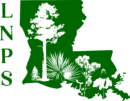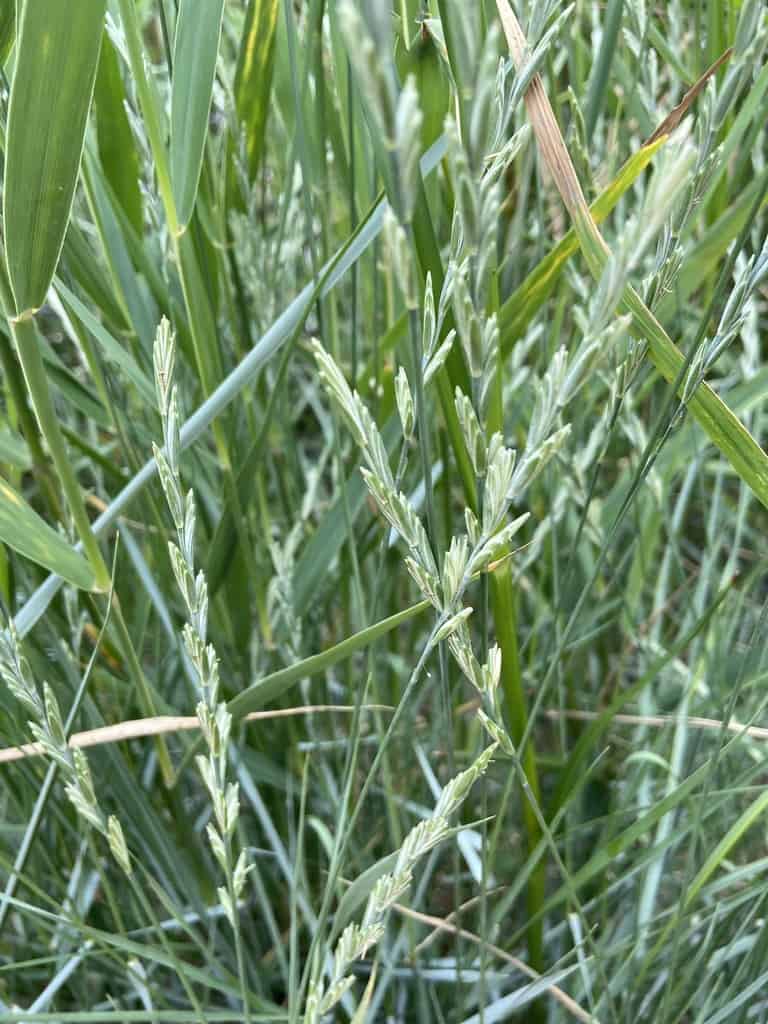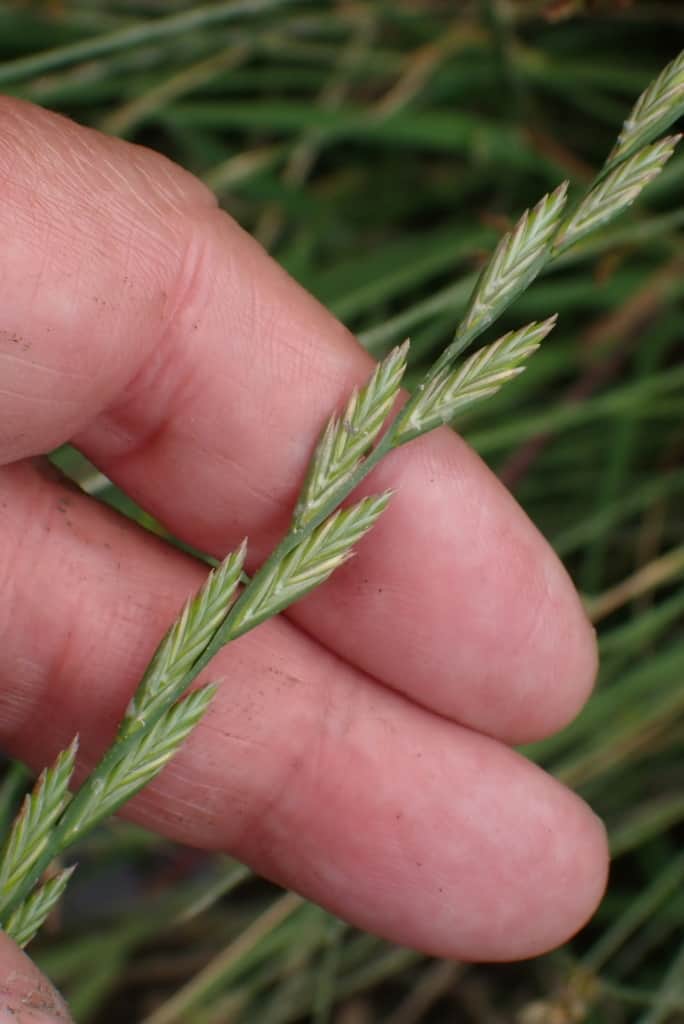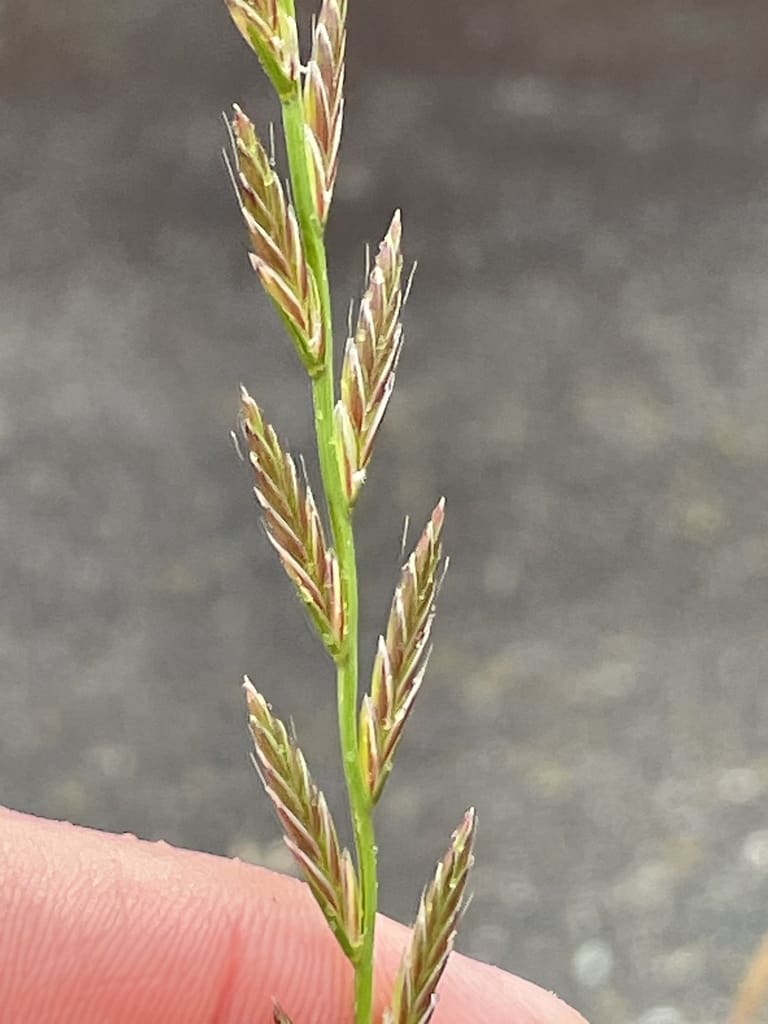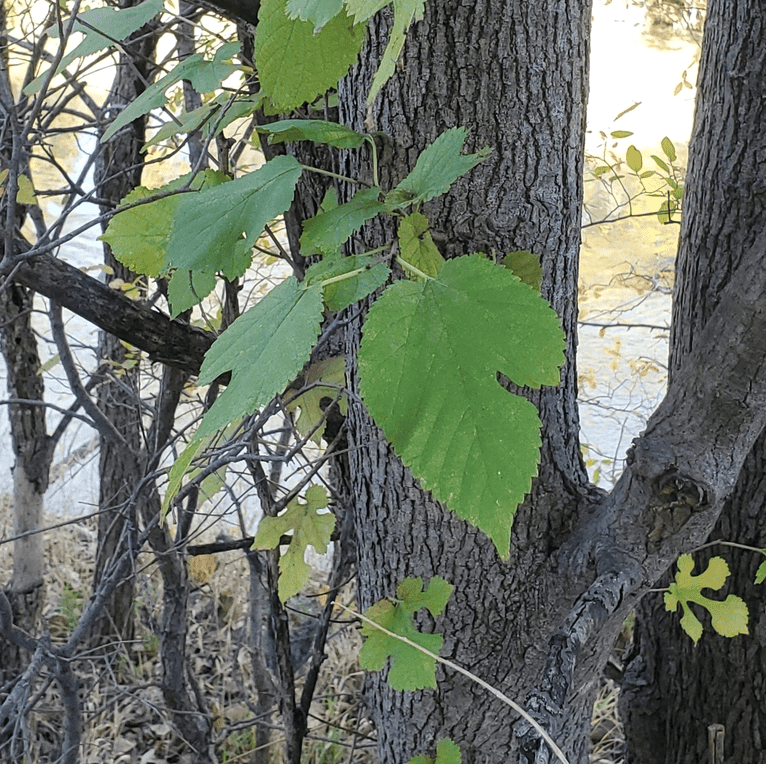Perennial Ryegrass Lolium perenne, which exists as numerous subspecies and varieties, is native to Asia, the Middle East, North Africa, and southern Europe. It was introduced into the U.S. by early European settlers for use in pastures as livestock forage. Its earliest presence in Virginia is documented as no later than 1782. This grass is adaptable to a wide variety of environmental conditions and produces an abundance of easily-dispersed seeds. Perennial Ryegrass is spread mainly by seeds dispersed by human activity and animals. Mammals spread plants by dispersing seeds attached to their fur. Grazers that consume this species also spread seeds, because Perennial Ryegrass seeds can germinate after passing through grazer digestive systems.
Perennial Ryegrass is classified by the Louisiana Department of Wildlife and Fisheries as a Tier II invasive species defined as “currently causing moderately negative impacts on wildlife or natural communities in Louisiana”. Perennial Ryegrass is thought to cause little direct negative impact to native habitats, but possibly contributes to the cumulative damage to habitats from numerous invasive grass species.
The U.S. is a major exporter of Perennial Ryegrass seed, and Perennial Ryegrass also is economically important as a productive pasture and forage species. It is widely available and promoted for use in pastures, as a winter cover crop, and for erosion control at construction sites.
Landscape With These Native Plants Instead:
Annual Ryegrass, although not native, may not persist where it is used and therefore be a better choice.